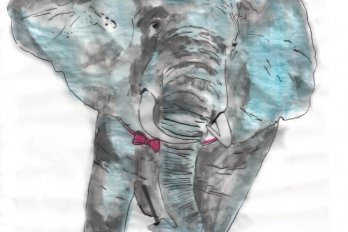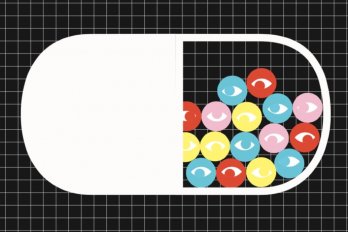BERLIN — I can’t remember exactly how I discovered Tacheles. I know it was the winter of 1993, just before Christmas, and I was staying with my family in a hotel near Alexanderplatz. The city had only just shed its Cold War prefixes, and neither map nor guidebook was much help in navigating the no-longer-East Berlin. It might have been the hotel concierge or perhaps the friendly Fräulein at the old-school Gasthaus — that old eastern dame who couldn’t fathom why anyone from sainted Canada was wasting his time in dumpy old Berlin — who pointed me toward Oranienburger Strasse. The detail, like so much about Tacheles, is hazy.
I remember a broad boulevard lined with decrepit warehouses, each with its own resident community of artists, its own manifestos graffitied across the walls, and a unique brand of humming, conspiratorial excitement circling the tables alongside the freely circulating joints at each ramshackle ground-floor café. There seemed to be dozens of them, cramped spaces opening on back alleys that led to side lanes that poured into yet another thrumming café or cavernous gallery space. I don’t remember much, really, but I remember the vibe — a discombobulating smoke cloud of embryonic freedom.
One back alley garden stands out in the haze, strewn with couches and metal sculpture, a sort of café patio peopled by robots. Fifteen years later, I’ve finally found its creator. Here he is, Martin Reiter, sculptor of Roboexotica and manager of Kunsthaus Tacheles, the only art collective still extant on this storied stretch. He greets me in the antechamber of Tacheles’s first-floor office, settling into a deflated thrift store couch beneath a wall map of pre-reunification East Germany to explain where the collective in my faded memory came from and where it might go next.
Tacheles today is a six-storey warren of ateliers in the half-salvaged ruins of a Weimar-era department store. Aproned by a vacant lot, yoga studios, and cocktail bars with Moët & Chandon awnings, it struck me as the last authentic redoubt of Berlin’s idealistic, anarchistic post-reunification renaissance.
This characterization, Reiter informs me in quiet, firm, Austrian-accented English, is a “touristic cliché.” He underscores the point with a wry shake of his shoulder-length mane and a pale blue gaze. “You cannot really say this is the last fortress of the subcultural whatever,” he says. “It’s not. It’s only an art space.” I’m inclined to reply that it’s only an art space like CBGB’s was just a bar. For several years now, Berlin has been quite possibly Europe’s most vibrant artistic and subcultural hub, and that status owes no small debt to this first reborn block of the liberated East.
The easterners came to Tacheles first, mere weeks after the Berlin Wall’s collapse, before the police had even figured out what the new laws were. Veterans of West Berlin’s energetic 1980s squatter movement arrived soon after. In the years since, the epicentre of the scene has shifted, bestowing hipster cred on one old gdr neighbourhood after another (Prenzlauer Berg, then Kreuzberg, now Friedrichshain). But Tacheles has remained as a sort of avant-garde institution. Reiter acquiesces to what he calls “the name-dropping thing”: Nick Cave once used the building’s theatre as a rehearsal space, as did Canadian experimental musician Peaches. Acid house pioneer A Guy Called Gerald still works out of Tacheles from time to time.
The collective has now gone semi-legitimate, funding itself with revenue from its top-floor bar. Its future, however, is as unsure as ever, since its expired lease rests in the hands of a company that seized the assets of an absentee landlord. Reiter is “very optimistic” it will survive this ambiguous moment.
Tacheles, he says, has thrived for nearly two decades in a state of perpetual transition. It has lost none of its vitality and countercultural edge, and it still bestows a singular brand of street cred on an artist’s CV. “We have a concept nobody else does, hmm?”Reiter says.Tacheles’s east-facing exterior wall is covered in a giant hand-painted billboard. how long is now, it reads, black letters a metre high, scrawled above what looks like an X ray of a death mask. There is no question mark, because it is a statement of bald fact, testifying to a moment that has stretched and mutated across eighteen years.
Right now, as Reiter’s colleague Khaled Kenawi leads me up the main staircase, Tacheles still thrums. On the third floor, a new shop sells prints of Dutch artist Tim Roelofs’ panoramic collage work, which mixes Communist iconography and Western pop ephemera. In one piece, Karl Marx drives a ’50s Chevy down a wide boulevard with Homer Simpson in the passenger seat and Scrooge McDuck hanging out a rear window. Roelofs’ art adorned a series of miniskirts in the most recent Versace collection. Two floors up, the Belarusian painter Alexandr Rodin is finishing off a massive four-canvas work that combines Dali’s fish-eye lens, Picasso’s bent angles, and Bosch’s teeming garden into a singular kaleidoscope of twenty-first-century doom.
I return later that evening to find Kenawi behind the bar on the top floor. He joins me at the rail to sip a cup of draft and survey the scene. It’s nearing sunset, and the wide, café-covered lot behind Tacheles is beginning to come to life. On the far side, a building facade is covered in a three-storey Nike ad featuring a Brazilian soccer star. Kenawi, born and raised in East Germany in another age entirely, wonders at the point of it. “People will not forget to buy bread or butter,” he says.
“Or cars.”
“Or shoes,” I add.
“Exactly.”
“But it’s those ads that make certain shoes worth $150 a pair.”I say it like I’m tutoring him, because on some fundamental level — one instilled only by a youth spent immersed in jingles and product tie-ins — he doesn’t get it. Kenawi is caught in the continuous now of Tacheles, born in the pallid GDR past and awash in the hip Berlin present. I’m not sure it’s such an easy place to be, but it’s one hell of a point of view.




